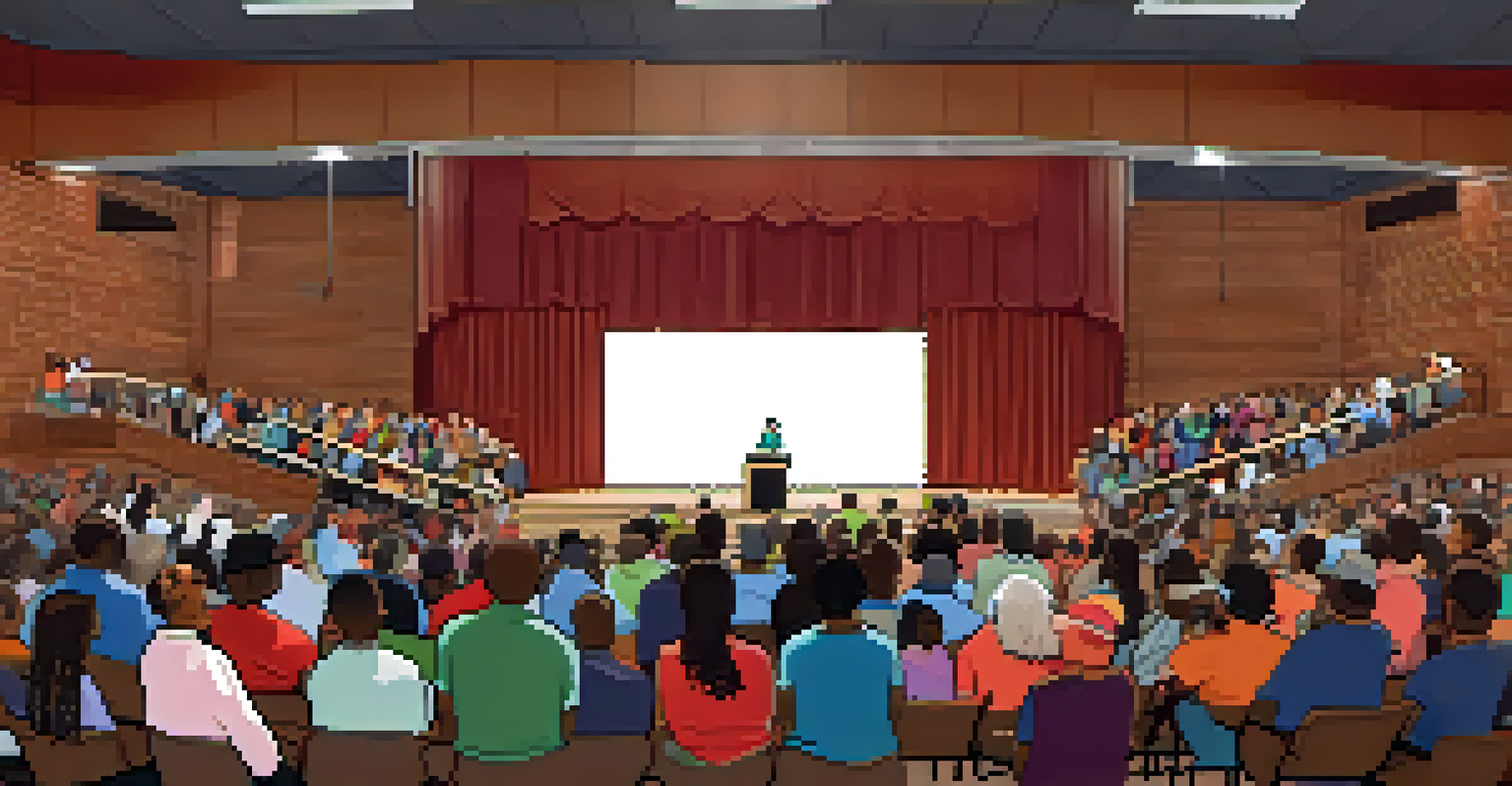Addressing Inequality: Funding Disparities in NYC Schools

Understanding the Funding Landscape in NYC Schools
New York City's education system is vast and complex, serving over a million students across diverse neighborhoods. However, the funding allocated to these schools varies significantly, often reflecting the wealth of the surrounding community. This disparity can lead to stark differences in educational quality, resources, and opportunities for students.
Education is the great equalizer.
At the heart of this issue is how schools are funded primarily through local property taxes. In affluent areas, schools often receive more funding, allowing for better facilities, advanced programs, and more extracurricular activities. Conversely, schools in lower-income neighborhoods struggle with limited resources, impacting student performance and overall well-being.
Thus, understanding this funding landscape is crucial for addressing the inequalities present in NYC schools. It sheds light on why some students have access to enriched educational experiences while others are left behind, highlighting the urgent need for equitable funding solutions.
The Impact of Funding Disparities on Students
Funding disparities directly affect students’ day-to-day experiences in school. For instance, schools with higher funding can offer smaller class sizes, which fosters a more personalized learning environment. In contrast, overcrowded classrooms in underfunded schools often lead to less individual attention for students, hampering their academic growth.

Moreover, disparities in funding can limit access to essential resources like textbooks, technology, and extracurricular activities. Students in well-funded schools might participate in advanced coursework or arts programs, while their peers in underfunded institutions miss out on similar opportunities. This unequal access can influence college readiness and future career prospects.
Funding Disparities Affect Students
The unequal distribution of funding in NYC schools leads to significant differences in resources, impacting students' academic experiences and opportunities.
Ultimately, the impact of these funding disparities extends beyond academics. They can affect students' self-esteem, motivation, and overall engagement in their education, creating a cycle of disadvantage that is difficult to break.
Historical Context of Education Funding in NYC
To fully grasp the current funding disparities, it's essential to look at the historical context of education funding in New York City. For decades, systemic issues and policies have perpetuated inequalities, often rooted in socioeconomic factors. The historical reliance on local property taxes has consistently favored affluent neighborhoods over those that are economically disadvantaged.
The function of education is to teach one to think intensively and to think critically. Intelligence plus character – that is the goal of true education.
Additionally, landmark legal cases, such as the Campaign for Fiscal Equity (CFE), have highlighted the need for equitable funding but have often fallen short of creating lasting change. While some reforms have been made, the underlying issues remain, leading to a persistent gap in resources available to students across the city.
Understanding this history helps stakeholders recognize the long-standing challenges they face in addressing funding disparities today, emphasizing that reform requires not just policy changes but a shift in societal values toward equitable education for all.
Current Initiatives to Address Funding Inequality
In recent years, several initiatives have emerged aimed at bridging the funding gap in NYC schools. Programs like the Fair Student Funding formula seek to allocate resources more equitably based on student needs rather than local property wealth. This initiative aims to ensure that all students, regardless of their zip code, receive the support they deserve.
Non-profit organizations and community groups are also stepping up to advocate for change. They provide resources, support, and funding to underprivileged schools, highlighting the importance of community involvement in addressing educational inequities. These grassroots efforts often bring attention to the disparities and push for legislative changes.
Historical Roots of Inequality
The reliance on local property taxes for school funding has perpetuated historical inequalities, particularly in economically disadvantaged neighborhoods.
While these initiatives show promise, ongoing commitment and collaboration among government, schools, and communities are vital. Addressing funding inequality is not just a matter of policy; it requires a collective effort to create a more just educational system.
The Role of Policy Makers in Education Funding
Policy makers play a crucial role in shaping the funding landscape of NYC schools. Their decisions regarding budget allocations, funding formulas, and educational priorities directly impact how resources are distributed. By prioritizing equity in their policies, they can help address the systemic issues that have led to disparities.
Moreover, transparent communication and community engagement are essential components of effective policy making. When policy makers involve parents, educators, and students in the decision-making process, it fosters a sense of ownership and accountability. This collaborative approach can lead to more informed policies that truly reflect the needs of all students.
Ultimately, the commitment from policy makers to prioritize equitable funding can set the tone for a more inclusive educational system. Their leadership is vital in driving change and ensuring that every student has the opportunity to succeed, regardless of their background.
Community Engagement in Addressing Educational Inequities
Community engagement is a powerful tool in tackling educational inequities in NYC schools. When parents, educators, and local organizations come together, they can amplify their voices to advocate for better funding and resources. This grassroots approach helps to ensure that the needs of the community are at the forefront of discussions about education.
Programs that encourage community involvement, such as school board meetings and local advocacy groups, can foster collaboration and bring about meaningful change. By working together, communities can identify specific needs and mobilize resources to support underfunded schools, creating a sense of shared responsibility.
Community and Policy Collaboration
Effective change in educational funding requires collaboration between policymakers and communities to advocate for equitable resources for all students.
In essence, community engagement not only empowers individuals but also builds a network of support that can lead to systemic change. When communities unite to address funding disparities, they create a stronger foundation for students to thrive.
Looking Ahead: The Future of Funding in NYC Schools
As we look to the future, addressing funding disparities in NYC schools will require sustained efforts and innovative solutions. The conversation around equitable funding is gaining momentum, with more stakeholders recognizing the importance of ensuring that all students have access to quality education. This growing awareness is encouraging, but action is needed to translate it into meaningful change.
Advancements in technology and data analysis can also play a role in reshaping funding strategies. By leveraging data to identify areas of need and track progress, stakeholders can make informed decisions that prioritize equity. This strategic approach can help to address the root causes of funding disparities and create a more balanced educational landscape.

Ultimately, the goal is to create an educational environment where every student, regardless of their background, has the resources and support to thrive. By continuing to advocate for equitable funding and fostering collaboration among all stakeholders, we can work towards a brighter future for NYC's students.